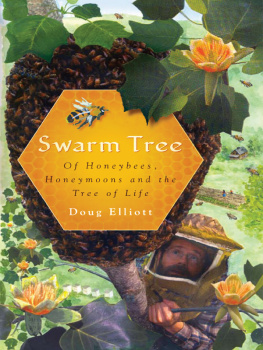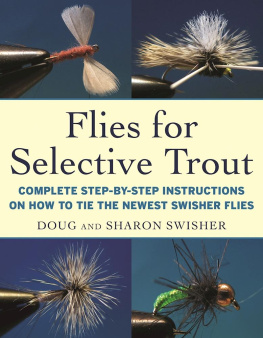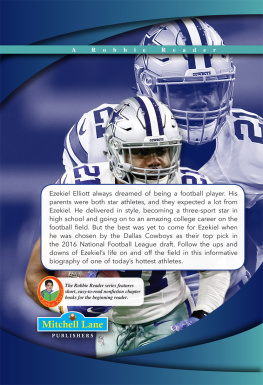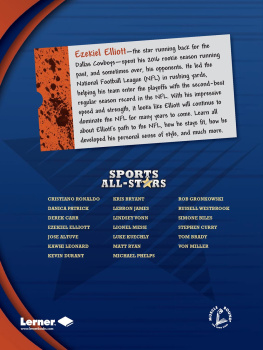

Published by The Natural History Press
A Division of The History Press
Charleston, SC 29403
www.historypress.net
Copyright 2009 by Doug Elliott
All rights reserved
Illustrated by Doug Elliott, cover photography by Todd Elliott, cover graphics by Billy Bostic of Associated Printing and cover design by Marshall Hudson
First published 2009
e-book edition 2012
ISBN 978.1.61423.602.3
print ISBN 978.1.59629.675.6
Library of Congress CIP data applied for.
Notice: The information in this book is true and complete to the best of our knowledge. It is offered without guarantee on the part of the author or The History Press. The author and The History Press disclaim all liability in connection with the use of this book.
All rights reserved. No part of this book may be reproduced or transmitted in any form whatsoever without prior written permission from the publisher except in the case of brief quotations embodied in critical articles and reviews.
Contents
Acknowledgements
Id like to express many thanks to the multifaceted individuals who have offered me all kinds of support for this project, including editing, critiques, suggestions, hospitality, friendship, companionship and love: Joyce Munro, Alan Muskat, Robert Johnson, Ray and Rosa Hicks, Chris Budke, Bruce Randolph, Robert Hunsucker, Fred Bower, Alden Griffis, Clyde Hollifield, Theron and Doris Edwards, Lee Edwards, Billy Jonas, Dale Boetcher, Becca Munro and especially Yanna and Todd.
Crossing Boundaries
Of Lurking Gators, Leaping Sunfish, Turkey Egg Omelets and Georgia Cops
STOP RIGHT THERE!
The piercing command froze me in my tracks. I was pushing our canoe into a creek at the edge of a south Georgia salt marsh. Yanna and I looked around and were astounded to see a police car pulled over on the shoulder.
This book is about crossing boundariesjourneying into new realms, gaining new perspectives. Sometimes a boundary is defined by something as tangible as a barbed wiretopped chain-link fence, as political as a mere dotted line on a map, as legalistic as an interpretation of the law or as mutable as the shoreline of a tidal creek, and sometimes it is as unfathomable as the tender edges of a lovers heart.
Come join me on this adventure. Its sort of a down-to-earth spiritual journey. Well be following tracks, messing with bees, chasing butterflies, stalking deer, catching fish and picking up pawpawsand hitchhikers. Well be learning the lore and natural history of the plants and animals that we encounter, but well also be probing creation itself, asking the deeper questions and learning the stories that connect us all. Speaking of stories and crossing boundaries, lets get back to that roadside/swampside confrontation with the south Georgia gendarmes.
Our canoe was nestled in the shallow tip of a tidal estuary that extended under an eight-foot chain-link fence into the mowed highway right-of-way. The water was less than a foot deep, and it was two or three feet widejust the width of our canoe. Because the creek was in a low spot in the terrain, the bottom of the fence was still a couple of feet above the surface of the waterjust the height of a canoe. It would be easy for us to duck under the fence. This was a perfect entry point to explore the extensive salt marshes and Cumberland Island, a barrier island, off the coast. We were looking forward to camping out, foraging for wild foods and enjoying the sunshine and salt air.
We learned that the only public transportation to this pristine island was through a ferry service from the town of Saint Marys. But canoes were not allowed on the ferry. We obtained a county map and asked a sporting goods store owner if he knew any other places from which we could canoe out to the island. He pointed out a public boat landing on one of the many serpentine tidal rivers that wind through the salt marshes. We could put in there, he said, but it would be more than fifteen miles to the island. Some of the water was open and could possibly be choppy and difficult canoeing, especially if there was a strong headwind or tide. The map showed that there was nothing but extensive salt marshes on either side of the rivernot the sort of place you would want to pitch a tent.
When I asked about another road that terminated at a creek much nearer the island, he said that there was a large chemical plant at the end of that road. There was no boat ramp or public access to the water there, he assured us. We thanked him and left. In spite of what he said, I couldnt help but notice that on the map there was a hairline that might just indicate a branch of a creek. It looked like it might reach the road. Such a stream would mean little to most boaters but could mean everything to canoeists. We had to check it out.
We drove to the end of the road and, sure enough, it ended at the gates of an immense factory. There was a gatehouse and that chain-link fence around the property. The factory was set way off in the distance like a billowing science fiction city. There was a parking lot for semi trucks and trailers outside the gate on the left. As we approached the gate, we slowed down to scan the right shoulder of the road, looking for the stream that our map had hinted at. Could it be that it just might meet the road and be our access to the sea?
Not thirty yards from the gatehouse our prayers were answered. There it was: the tiny tip of a tidal estuary. The water extended under the fence into the mowed highway right-of-way for about fifteen feetexactly the length of our canoe. It looked like it was not fifty yards until it flowed into the open water of the main creek. Just what we had hoped for! This would work fine if we could only get permission to leave our vehicle somewhere in the area.
In the gatehouse there was a lone man working. His job was to monitor the flow of goods and traffic, as well as to stop unauthorized traffic from entering the factory grounds. We told him what we wanted to do and asked if we could leave our pickup truck there outside the gates. He looked the situation over thoughtfully and said, I dont see why not, and he showed us where we could park our truck. We thanked him and proceeded to unload our canoe and assemble our gear. We knew we had to work fast. The tide was one concern. It would be going out soon and might just leave our boat high and dry. Our permission was our other reason for urgency. As easily granted as it was, we knew that it was coming from near the bottom of a massive corporate hierarchy and that this permission could be as ephemeral as a mayfly, dissipating even faster than the rapidly receding tidal waters. We loaded our packs, sleeping gear, tent, camera, lenses, film, field guides, binoculars and cooking geara light wok and a stainless pot. We quickly threw in what food we had broughtrice, a few sandwiches, some citrus and granola. Even at our frenetic pace, it still was an hour before we finally had the canoe loaded and we were ready to go. Yanna got into the bow of the canoe, and we were finally ready to shove off.
Thats when we were stopped in our tracks by the voice from above. The officer addressing us was a small woman with wavy blonde hair. She was in full uniform. Pure unbridled authority oozed from her every pore as she suspiciously glared down at us from the shoulder of the road. This woman was not to be messed with. She was accompanied by a heavyset, middle-aged man. He wore regular, casual clothes and a cap with a bill that had Camden County Sheriffs Department emblazoned on the front. We wondered if he was a fellow officer and if this was the official mens uniform. Now just where do yall think youre goin? she demanded.
Next page














